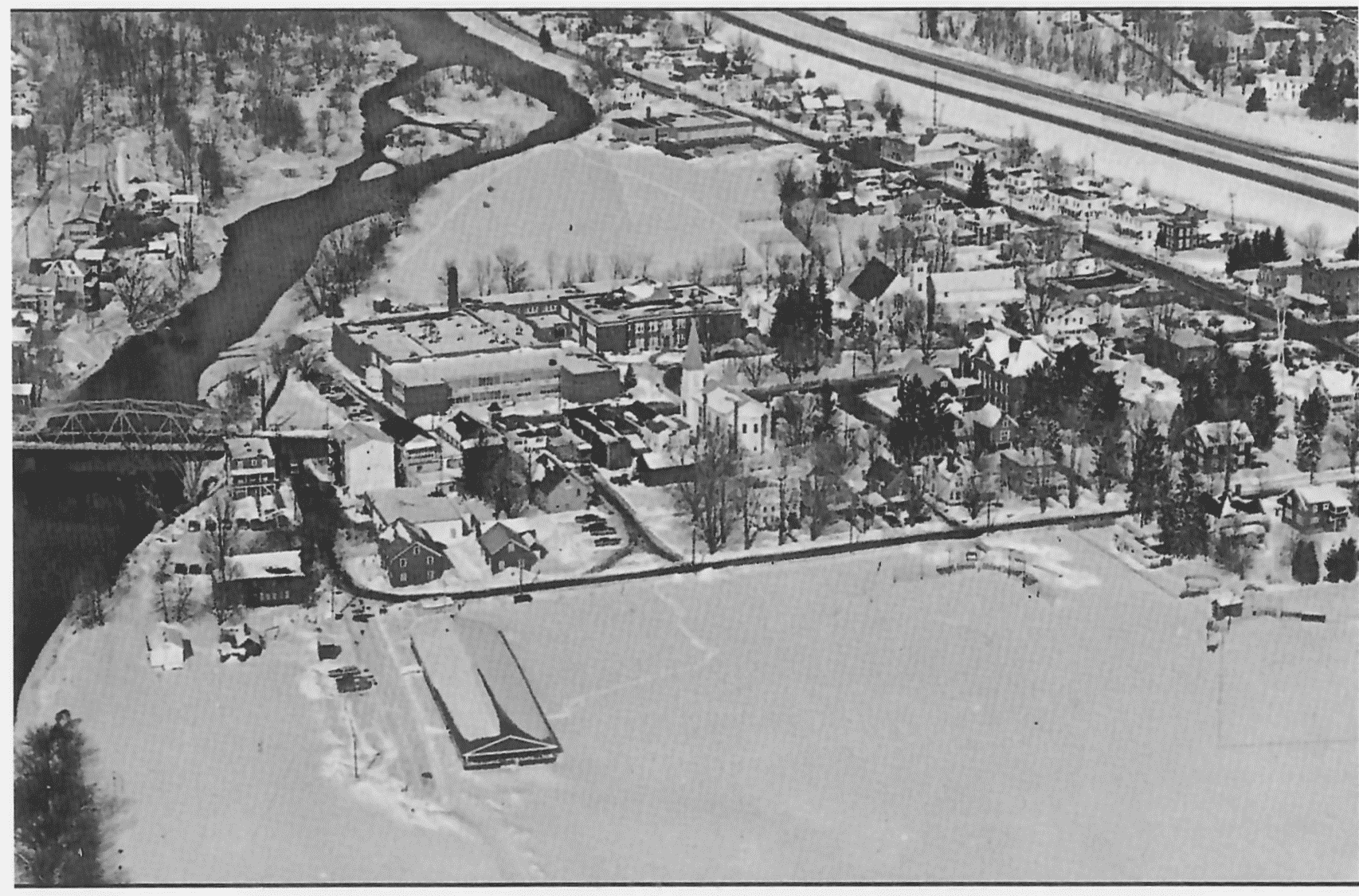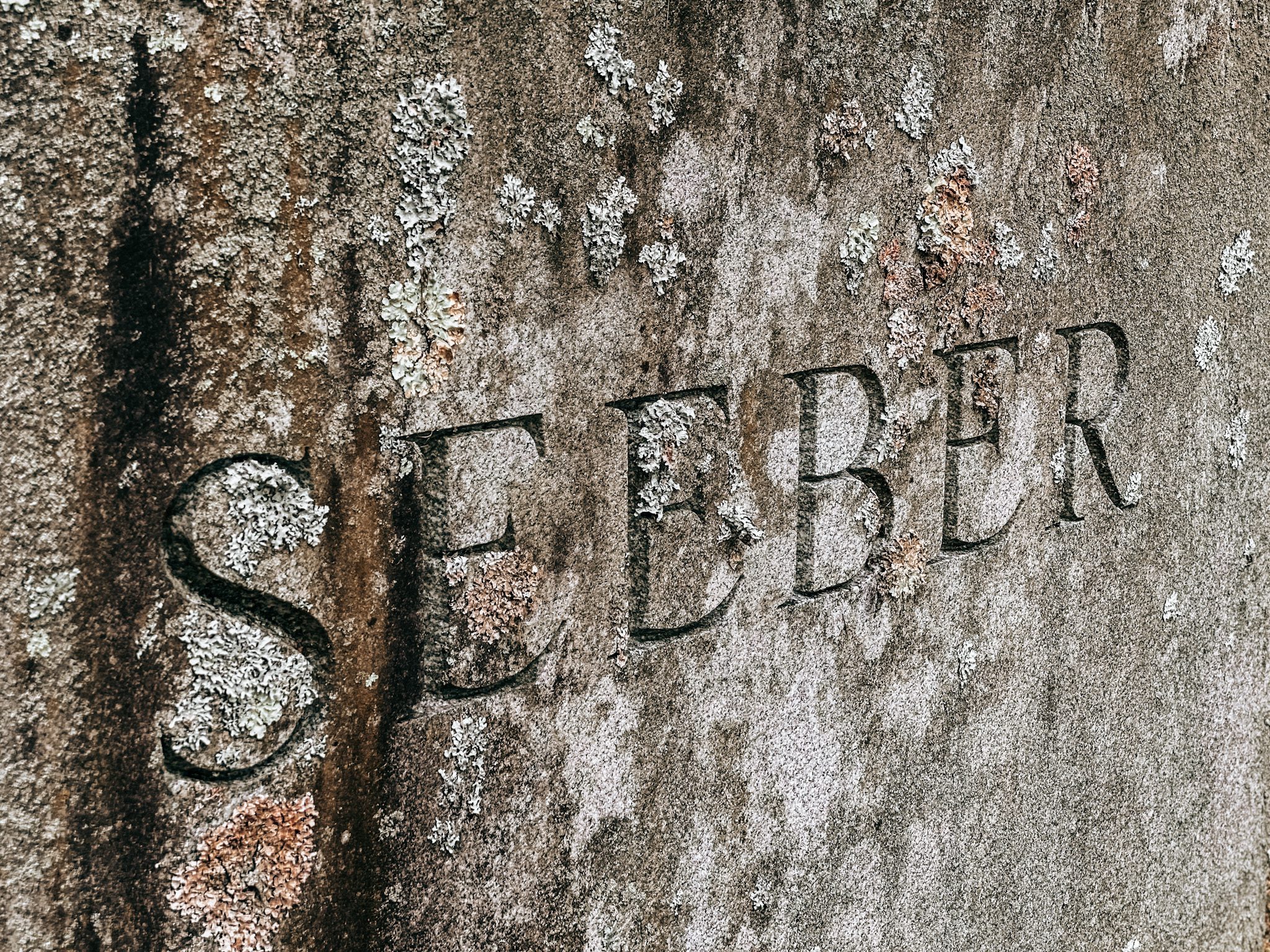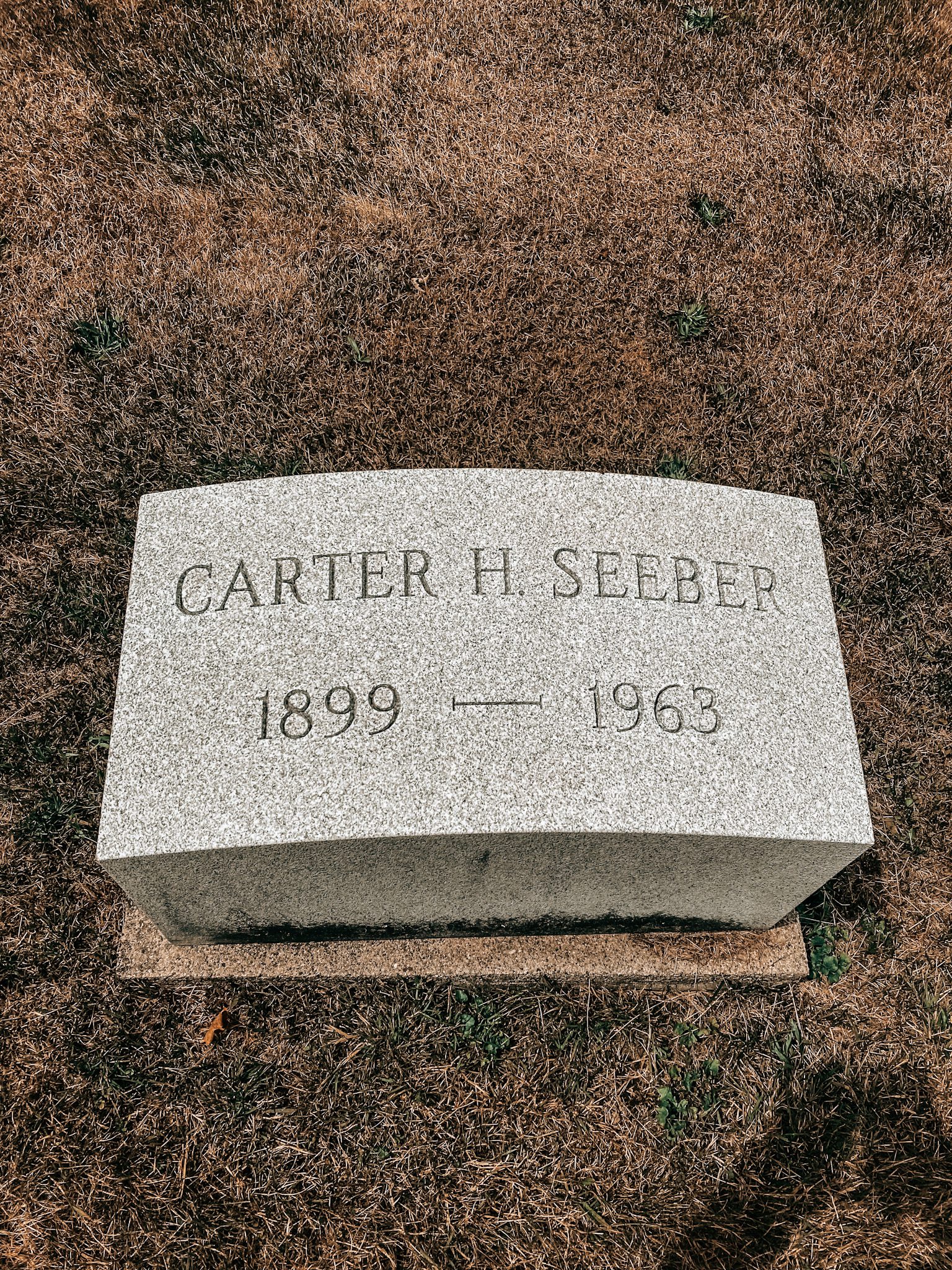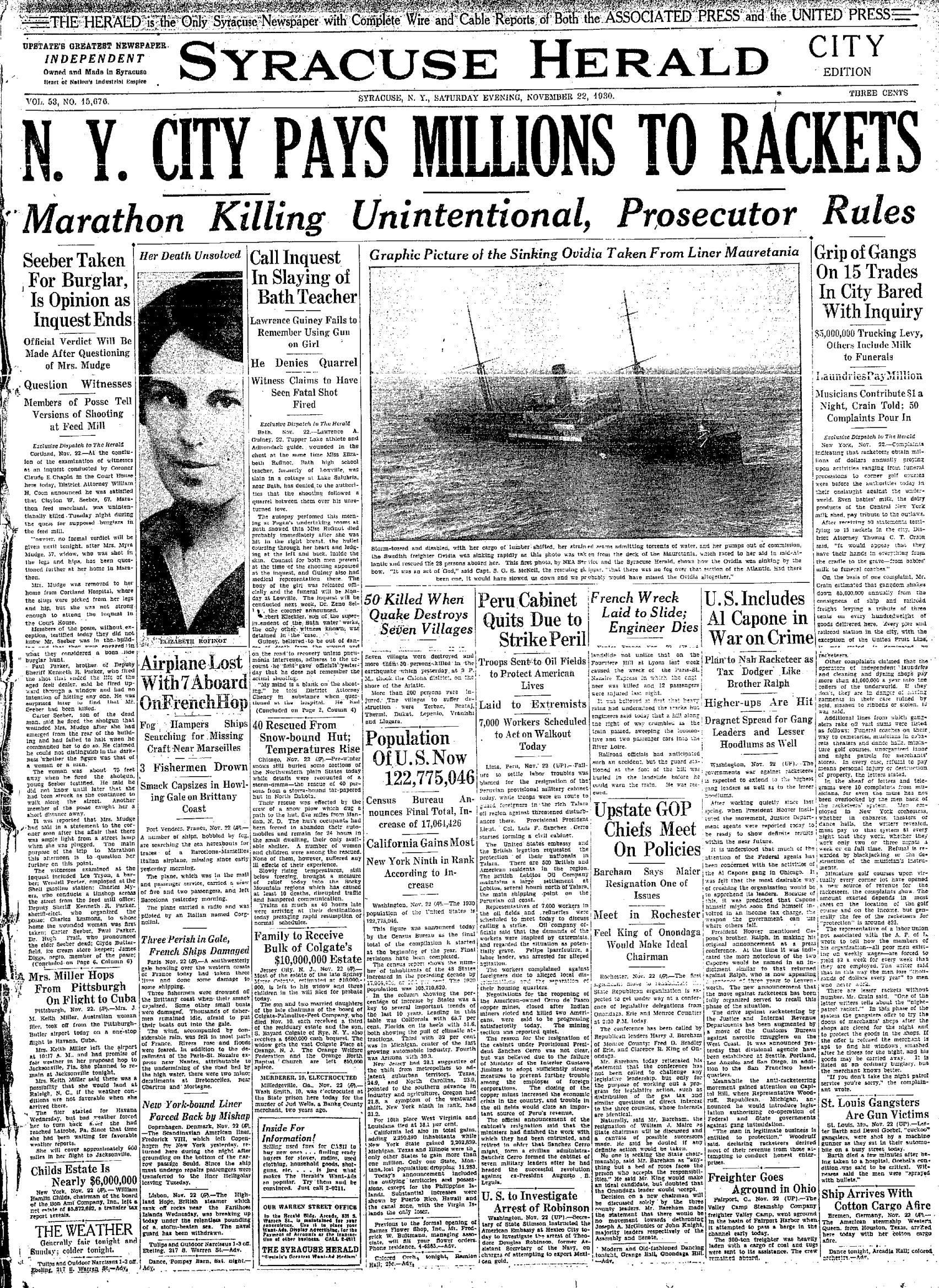Location #1: Maple Museum at Peck Street, Marathon, NY
(42.438927, -76.034337)
‘Twas a cold November night, just days before Thanksgiving, the year is 1930. Carter Seeber pulled up his truck alongside his father’s feed store in downtown Marathon at 9:30 pm. He planned to use the nearby garage to overhaul his vehicle. As Carter walked passed the shuttered mill, he reported hearing voices, later stating he saw a face in the darkened office window. When he checked the back door and found it latched from the inside, Carter quickly ran off to summon the Sheriff from the theater, just a few doors down.
Alerted of a burglary in progress, Deputy Sheriff Kenneth Parker quickly rallied a posse consisting of himself, his brother Paul Parker, Wendell Porter, James Diggs, and Carter Seeber. The mill’s office occupied the northwest corner of the building, with a window on each side. Sheriff Parker took the west window, and his brother, Paul, crouched under the north window. James Diggs was stationed at the southeast corner, nearest the back door, and Wendell Porter stood guard on the southwest corner, near the tin shop. Carter lay in wait at the northeast corner, under the cover of a small barn. From here, he had a clear line of sight of both the office and the back door.



After the posse surrounded the building, the Sheriff called out to the two shadowy figures in the office to “surrender and come out with their hands up!” He then threw a rock through the window nearest him. However, instead of surrendering, the Sheriff was answered by a shot fired from the adjacent window, directly over his brother’s head. Paul responded by placing the stock of his weapon against the side of the building and shooting directly upwards, firing towards the ceiling to frighten the bulgurs. The Sheriff also fired a warning shot towards the office ceiling from the opposite corner.
Almost immediately, the posse heard Carter Seeber calling out to someone to halt. A fourth and final shot rang out through the night air. When the posse apprehended the fleeing persons, they were shocked to discover it was the local widow, Mrs. Myra Mudge, who had been shot through the calf by none other than Carter Seeber.
The feed store stood eerily quiet in the darkness. When attempts to reach Clayton Seeber were futile, the Sheriff finally broke down the door. What lay inside was a ghastly scene.
Both shots had ripped through Carter’s father, Clayton Seeber, before lodging themselves in the ceiling. “His left hand was virtually torn off by a charge. All of the bones and flesh in his palm had been shot away.” The second shot pierced him directly in the heart. A 50-foot trail of blood wound from the office, through the mill, to the sliding door. Gruesome evidence that Clayton Seeber had dragged himself in an attempted escape before death overcame him. Bloody handprints stained the exit.
Was this all a terrible mistake or vindictive murder?
Location #2: Marathon Cemetery at Galatia Street, Marathon, NY
(42.4468, -76.03206)
November 20, 1930, The Binghamton Press reports, “Mr. Seeber’s frequent visits at night with companions has been widely discussed among villagers recently. Because of this, considerable mystery attaches itself to the actions of the armed posse.”
Wild and dark rumors swirled around the grievous death of Clayton Seeber. Many suggested that his son, Carter, was indeed aware of his father’s infidelities and had assisted in rounding up a posse that night, under fake pretenses, hoping to publicly humiliate Clayton. These rumors gained such clout and momentum that District Attorney Coon was sent to investigate the scene.






Upon interviewing the Sheriff, the event within the mill that wretched evening began to unfold. When Sheriff Parker entered the office, he immediately noted in addition to the bloody revolver on the counter, he saw “two small glasses and a whiskey bottle with the top blown off it… A blanket lay on the floor near the south end of the office.” According to the coroner’s report, he too saw “the half-filled quart bottle of whiskey, ginger ale bottles, and glasses.” The Syracuse Journal reported that the belief was “…the top of the bottle had been shot away. As Seeber had his left hand blown off when the posse men blazed away with shotguns, it was thought that the feed mill owner was just reaching for the bottle when he was hit by the first charge.”
This left D.A. Coon questioning if Clayton Seeber had indeed fired the first shot. If so, why then was Clayton reaching the whiskey bottle amid a shootout?
When D. A. Coon interviewed witnesses regarding Mrs. Myra Mudge’s presence in the darkened building with Clayton Seeber that night, he was met with notably inconstant stories. Charles Emmons, the Marathon undertaker, testified that Mrs. Mudge had denied having been in the mill at all and said she had been taking a walk. He quoted her saying, “funny a person couldn’t take a walk around the block without being shot.” In a statement given later to coroner Chapin, she “admitted to being in the office, but said she went there on business. She told the coroner she didn’t think lights were necessary. She had done no drinking at all that night.” Both the coroner and D.A. found her statement “incoherent in many respects.” The night of the incident, “Mrs. Mudge told the officers she went to the feed store to return an umbrella she had borrowed and sat down for a visit.” No umbrella was noted in the crime scene report. Were these fishy, ever-changing stories an attempt to cover up the truth of their affair? If that was the case, is it true that Carter Seeber was indeed aware of his father’s presence in the mill that night?
James Diggs, the posseman standing guard nearest the door which Mrs. Mudge exited that night, testifies, “I told her to stop, but she didn’t, and I let her go, seeing that she was a woman. Just before she broke into the light, I saw a shot spray in the dirt and water. I could tell that it was aimed at her. I couldn’t see her face, but I could tell by her coat and manner who she was.”
Carter Seeber, who shot Mrs. Mudge, was reported to have fired low so that it would strike near her feet as he was unable to discern that it was a woman. The D.A. and coroner re-enacted the scene of Mudge exiting through the east door. They determined that in the darkness of the alleyway, standing at Carter’s position 50 feet away, it was plausible one might not be able to distinguish a person’s gender.
Headlines blazed regarding the relentless “quizzing” by D.A. Coon regarding Carter Seeber’s innocence. After what the Syracuse Journal reported as “another grilling in an attempt to learn whether the son knew his father and the widow were in the mill when he sounded the burglar alarm.” D.A. Coon and coroner Chapin finally determined the tragic death of Clayton Seeber to be an excusable homicide. Verdict: none of the possemen were to stand trial. Inquest closed.
Was justice served? Clayton and Carter lie side by side for all eternity. Only they will ever truly know.

